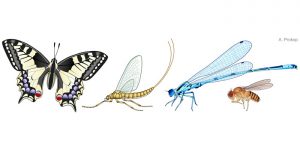Enter your address to receive notifications about new posts to your email.
Articles tagged Fundamental Research
(130 results)
-
Science & Publishing
Wolverine genome assembly sets a standard for conservation geneticists
Chromosome-level assembly of the North American wolverine sets a new standard for the weasel (Mustelidae) family.
-
2022 Beadle Award Winner: Shirley Tilghman
Becoming the president of a world-class university isn’t something that typically happens “by accident,” but that’s exactly how Shirley Tilghman describes it. “I did not intend to be a university president,” Tilghman says. “I probably had the steepest learning curve of any university president ever.” In 2000, Tilghman was serving as founding director of the…
-
News
What you’ll get from TAGC’s Industry Sessions
Students, postdocs, academic faculty, and industry researchers will all find benefits at the new Industry Sessions at TAGC, to be held April 22–26 2020 in the Washington DC region. When industry scientists and academic labs collaborate, both society and science benefit. That’s one of two big-picture messages Kailene Simon hopes will be conveyed through a…
-
Why fruit flies belong in primary and secondary schools
Guest authors Sanjai Patel and Andreas Prokop explain why school biology lessons are important places to advocate fundamental biomedical research, and they present strategies developed by the Manchester Fly Facility to bring Drosophila research into primary and secondary classrooms. The need for fundamental biology research has perhaps never been greater than today, yet the conditions…
-
The importance of being basic
Guest post by Irini Topalidou. This year’s Nobel Prize in Physiology or Medicine honored the discovery of a major breakthrough in cancer treatment: immunotherapy. At a news conference after the announcement, one of the recipients, James P. Allison, stated: “The reason I’m really thrilled about this is I’m a basic scientist.” And he continued: “I…
-
A look into how fur seals rebounded after overhunting
A new genome assembly for Antarctic fur seals sheds light on their historic comeback after 19th century hunting. In the late 19th century, the Antarctic fur seal was thought to be effectively extinct. After over a century of overexploitation driven by demand for the seal’s prized pelt, populations at known breeding grounds seemed to have…
-
Athlete’s foot fungus varies little around the globe
Sexual reproduction is scarce in skin infection culprit. While some people love to feel the burn during a workout, we generally seek that sensation in our muscles—not our feet. Treading barefoot in damp, communal environments like gym showers and the perimeters of pools can expose us to the fungus Trichophyton rubrum, the most common cause…
-
Building the basement
A suppressor screen in C. elegans uncovers previously unknown flexibility in the genetics underlying extracellular membranes. In nearly all animal tissues, thin barriers called basement membranes anchor outward-facing layers of cells—the linings of lungs, the top layers of skin, the insides of blood vessels—to the connective tissues that support them. Mutations disrupting any major basement…
-
How similar are fruit fly and human cancers?
New evidence for genome instability in fly tumors suggests key similarities—and differences—from human disease processes. Human cancers display a variety of abnormal genomic features, including increased numbers of single nucleotide variants (SNVs) and copy number variants (CNVs). However, a 2014 study on a fruit fly tumor detected no elevation of SNVs or CNVs compared to non-tumor…
-
Mito-nuclear interactions could influence disease variability
A new fruit fly model of Leigh syndrome reveals the importance of mtDNA variation. Inherited mitochondrial disorders pose a perplexing problem to researchers and clinicians: people with the same condition can have vastly different clinical manifestations, even if they share the same mutation. For example, a neurodegenerative disorder called Leigh syndrome, which can be caused…
-
A splice in timeless
Photosensitive alternative splicing of a malt fly circadian clock gene varies between northern and southern populations. Over the course of a day, most organisms undergo profound changes. Over the course of a season, the changes can be even more dramatic. For example, insects’ responses to the brisk nights and cooler days of fall and winter…











